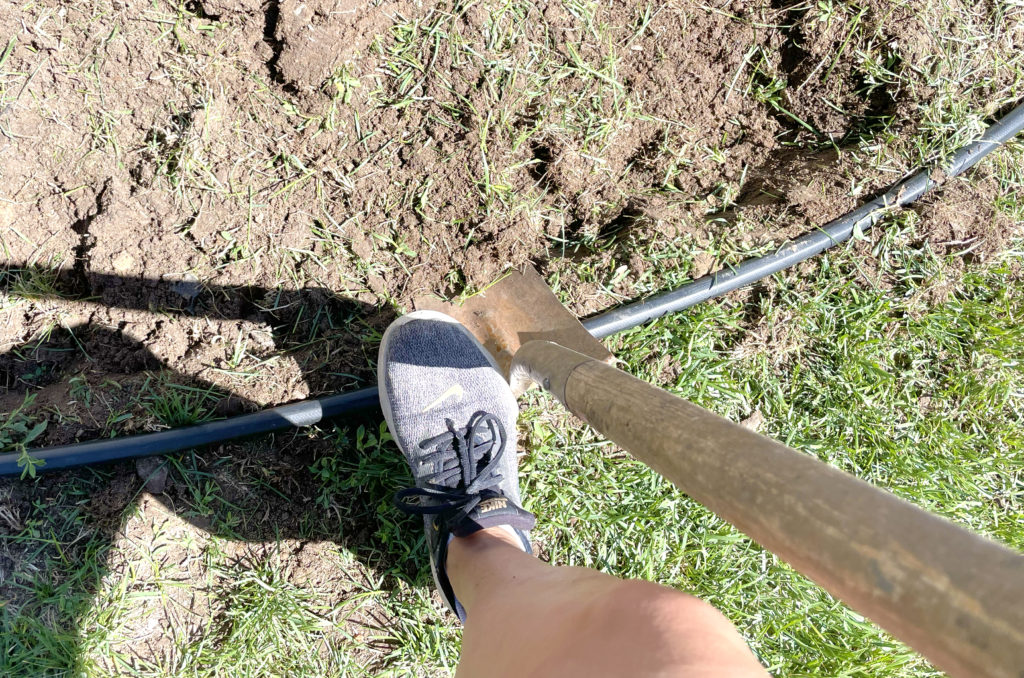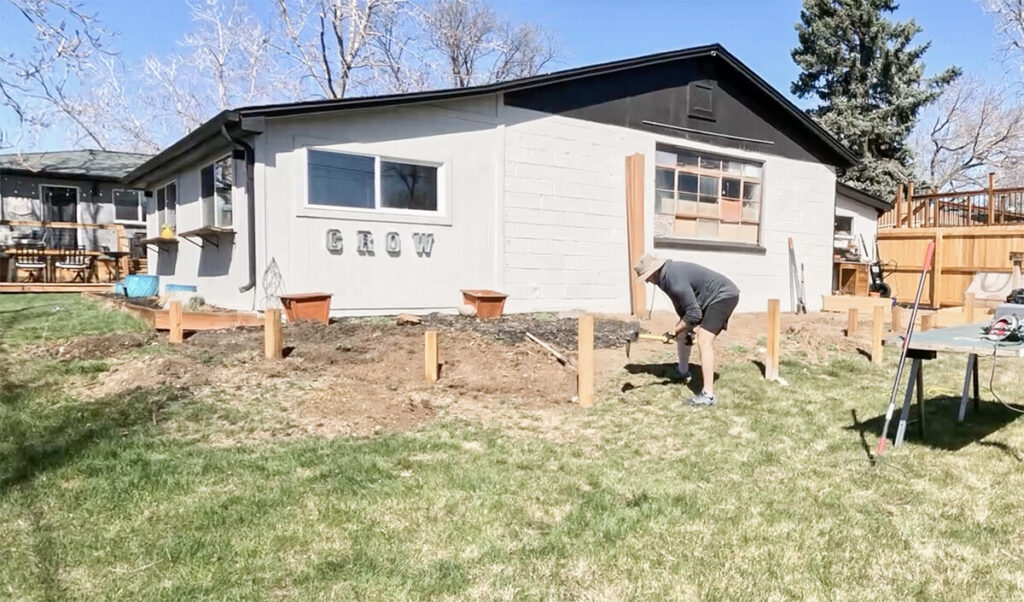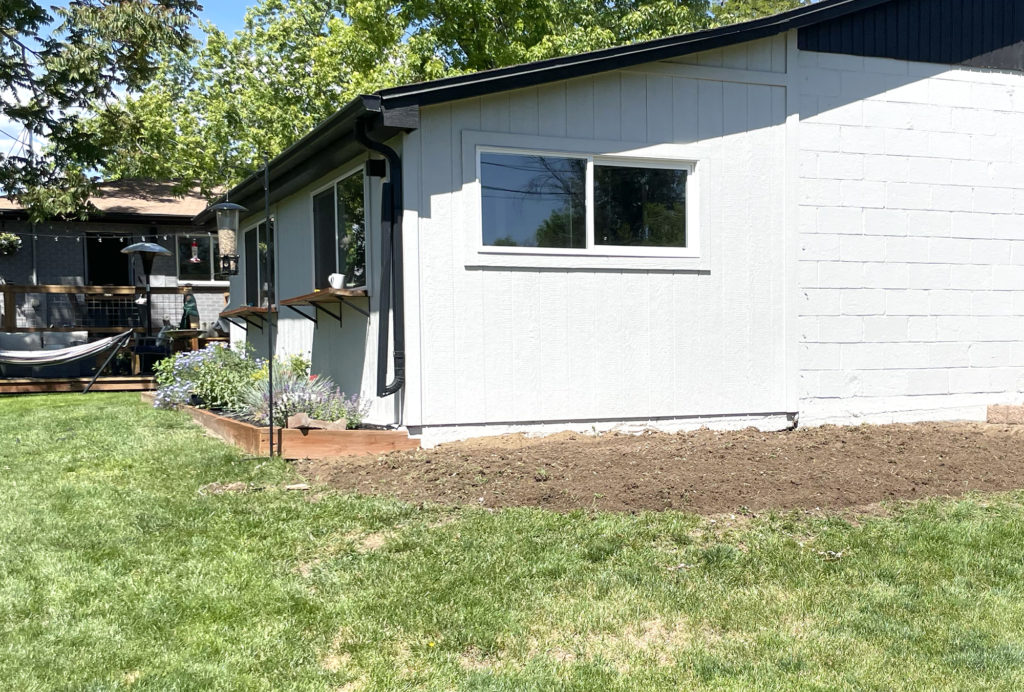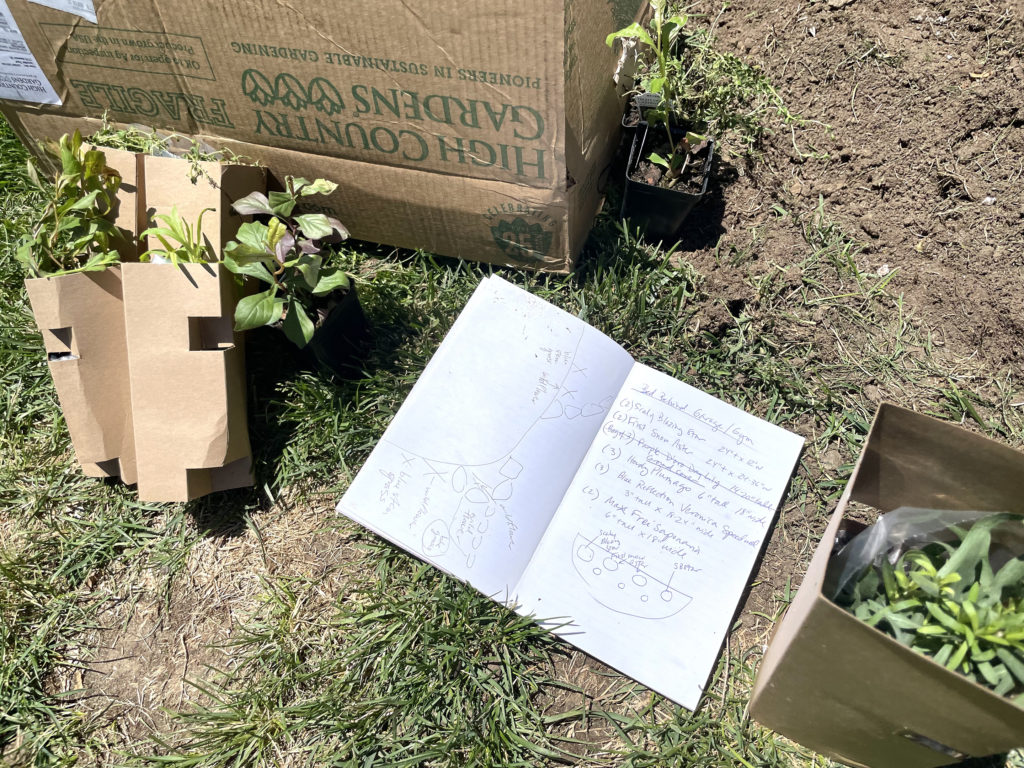Have ever found yourself wishing you had less lawn to water and wanted to potentially replace your lawn with low water plants? Do you live in a hot, dry climate like we do in Denver, Colorado and find it challenging to keep your grass adequately watered? If you answered yes, this post will show you ideas on how to replace your lawn with more xeric plants requiring much less water than grass.
Xeric Gardens: So Much More than Landscaping with Only Rock
Creating a low water garden can be so much more than killing off your grass and covering it with rock or mulch. In fact, there are some down sides to landscaping a lawn with rock beds alone. This method will produce more heat sitting in the sun. And it will most likely increase the energy costs to run air conditioning for the house sitting near it. Not to mention, removing your lawn provides such a great opportunity to grow native plants that are beneficial to birds and pollinators. Whether we think much about it or not, birds and pollinators are essential to our well-being. Don’t miss our post on all the benefits of attracting birds to your yard! So take advantage of the real estate and plant something that benefits nature!
Low Water Requirement Gardens Can Be So Beautiful
I first started learning more about xeric gardens for our dry climate when I started observing what others were doing to their lawns in and around Denver. Seeing the varieties of low water plants at the Denver Botanic Gardens provided much inspiration of what might be possible to grow in our climate. Then I found an online retailer called High Country Gardens. They have dedicated areas of their site for sustainability in your backyard, and even have pre-planned gardens you can buy for replacing your lawn with low water plants. It definitely takes the guesswork out of where to start!
I’m relatively new to gardening, but I’m not afraid to try new things in order to discover what works and what doesn’t. I’m getting more intentional about creating cut flower gardens throughout my backyard as well. There are so many beautiful drought tolerant choices to choose from and you’ll reap the benefits by having cut flowers to put in vases all summer long!
How We Came to the Decision to Remove Parts of Our Lawn
When we first moved into this home 5 years ago, we went to great lengths to rehabilitate the current lawn filling in areas without any grass growth with new sod and reseeding and fertilizing the existing lawn. And then we watered. Oh did we water. We have a large backyard and didn’t have a sprinkler system installed. So I was dragging sprinklers around the best I could, but it just wasn’t enough.
Denver has been having incredibly dry summers. So we get very little rain water throughout the summer. To have a green lawn here means watering it OFTEN. I just started to feel like it was wasteful, and also not working very well. I felt like I was using so much water to keep it healthy and without a sprinkler system, I couldn’t keep up. Before I knew it, this area behind the garage was almost back to where it had been when we started—dying grass, weeds taking over. I decided to stop fighting it. It was then that I made the decision we were going to gradually start to replace my lawn with low water requiring, native plantings.

How I Began to Replace my Lawn with a Low Water Garden
Determine the Size of Your New Low Water Garden Bed
One of the first steps of replacing your lawn with xeric plants is to determine the area size you want to fill. First I laid out the shape of the new bed that I wanted with a garden hose. I then tilled the area just working in any remaining grass (and weeds) into the soil. This started as mostly dirt anyway so it didn’t really require killing the grass first. I guess I took the chance that weeds and grass might regrow by not pulling anything out. But I knew I’d be covering this area with mulch around my new plants. This would hopefully prohibit new weed growth from occurring.

Garden Bed Edging: Natural Edge or Man Made?
When I first begin, I usually opt to start with implementing a simple, natural edging in beds where I’m removing existing lawn. The reason for this is that I haven’t quite decided where I’ll stop! I just may like the look of these low water gardens so much that I’ll want to remove even more lawn in the future. So until I decide this, my natural edging between the garden bed and remaining grass is done by using an edging shovel. I don’t see the need to waste the effort and install metal edging or anything similar until I know for sure where my beds will stop.

As I get further into my quest for larger, drought tolerant gardens, I often expand the area and get my husband, Sterling, involved. He is a builder and owns a construction company, so he does my heavy lifting when I need an actual garden bed border constructed! One year after I edged this garden area with a natural border, we turned this space into a bigger project and added a wood border and flattened out the sloped pitch behind the garage. This created a much larger planting space for me. Gardening and landscaping take time and require patience as it progresses. New ideas and inspiration mean new gardening projects! Start small, and you can always improve and change your plan!


ChooSing the Low Water Plants that will Replace Your Lawn
As I mentioned earlier, my absolute favorite place to get my plants from is High Country Gardens. Their online plant store has a great selection. The ability on their site to search by light and water requirements, zone, region, etc. is fantastic. It makes it very easy for someone new to gardening to pick plants that will be successful in the garden. They even sell pre-planned gardens where they take all of the guess work for you. You just select your square footage and type of garden you’re wanting, and all the plants show up in a box to your front door complete with instructions. High Country Gardens also has really inspiring xeric garden ideas on their Instagram page.

I went online and selected individual plants for my bed that would work in a part shade garden. This area is covered by shade after 1pm. Once they arrived to me, I unpacked everything taking notes about planting space required based on how large each plant was expected to grow. I drew out the bed in a notebook to plan out where each plant will be placed. Sometimes I even do this on graph paper based on actual measurements of the bed and expected plant size. However, in this case I just roughed it in since it’s a smaller bed.

How to Prepare the Soil for Your New Xeric Garden

Before planting, I like to sprinkle the dirt with Preen Weed Preventer. It’s supposed to be safe for existing plants and can be applied anytime during the growing season.

I buy Yum Yum Mix when I plant my low water requiring plants. It’s a fertilizer/plant food that I put into each hole before planting. It gives the new plants a good start in the soil.

Completing the Low Water Garden
Once I got everything into the ground, I added some accent planters and decor to fill in the space while I wait the next year or so for the plants to fill in. That’s one thing about ordering from High Country Gardens… the plants you receive from them are young, so the garden tends to feel a little small while you patiently wait for a young plant to reach its 18 inch height. But I’ve found this happens quicker than you realize and it’s worth the wait!
These plants will require more water while they get established. So I tapped each new plant into my existing drip line that runs up against the left side of the garage. While they establish, they’re getting about 10 minutes of a slow drip of water per day and are doing well so far. That’s so much less water time than is required to keep the grass green that was once here! I’ll post an update here next year once this is filled in and beautiful!






